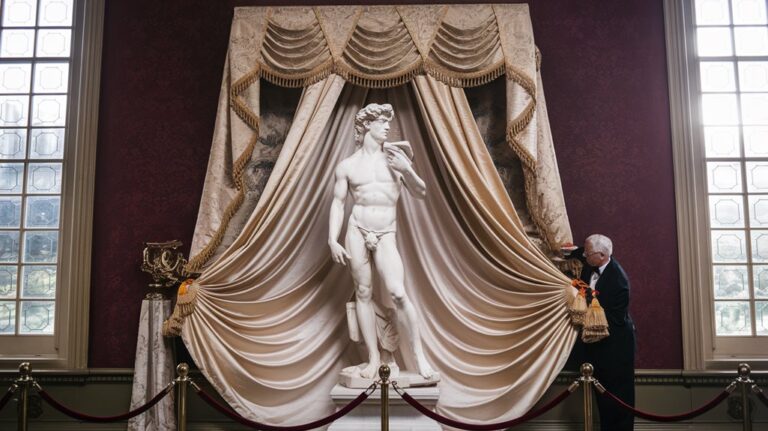France Used a 10-Hour Day Calendar During the Revolution
Time's steady march took an unexpected detour in revolutionary France, where you'd have found yourself checking a very different kind of clock. You've likely never imagined living in a world where your day contained just 10 hours, but that's exactly what the French Republic attempted during its radical reformation of society. As you'll discover, this bold experiment wasn't just about changing how people tracked their days—it was part of a larger vision to completely reshape human experience through rational design.
The Revolutionary Origins of France's Decimal Calendar

When the French Revolution swept through France in the late 18th century, it brought radical changes to every aspect of society, including timekeeping. The revolutionary ideals of breaking from tradition led to an ambitious project: creating a completely new calendar system.
You might be surprised to learn that this transformation began with mathematician Jean le Rond d'Alembert's proposal in 1754, but it wasn't until 1793 that the French government officially adopted it. Under this system, each day was divided into ten decimal hours, marking a dramatic departure from traditional timekeeping. The system proved difficult to implement as high replacement costs for existing clocks and watches created resistance among citizens.
The calendar's scientific rationale aligned with France's broader movement toward dechristianisation and decimalisation. A commission led by Gilbert Romme, with contributions from renowned mathematician Joseph-Louis Lagrange, developed this rational system to replace the Gregorian calendar.
They drew inspiration from an earlier model proposed by Pierre-Sylvain Maréchal, while poet Fabre d'Églantine crafted the distinctive month names.
Breaking Down the 10-Hour Day System
Three radical changes defined the French decimal day: its 10-hour structure, 100-minute hours, and 100-second minutes. In this system, you'd start your day at "zero" (midnight) and reach "five" at noon, with each hour lasting 144 conventional minutes.
Time adaptation proved challenging as citizens struggled with the complex calculations needed to convert between decimal and standard time. The calendar was part of a larger revolutionary effort to dechristianize French society. The reform aimed to create a fully metric system alongside standardized measurements for length and mass.
- A decimal hour was more than twice as long as a traditional hour
- Each decimal minute contained 86.4 conventional seconds
- New clocks displayed both systems to help reduce public confusion
While the government mandated this system in 1793, it only lasted until April 1795 for public use.
Though some official contexts continued using decimal time until 1805, most citizens found the dramatic shift too difficult to embrace in their daily lives.
Monthly and Daily Naming in the New Calendar
Beyond its decimal time structure, the French Revolution's calendar introduced an entirely new system of months and days that reflected nature's cycles and revolutionary ideals.
The monthly nomenclature drew from natural phenomena, with autumn months ending in "-aire" (Vendémiaire, Brumaire, Frimaire), while others described seasonal characteristics like Floréal (flowery) and Thermidor (heat). A committee of notable intellectuals developed this innovative system to revolutionize timekeeping.
The calendar's seasonal significance was evident in how months aligned with natural events: harvest time, fog, frost, snow, rain, wind, sprouting, and fruiting. The calendar included five supplementary days at the end of each year to maintain alignment with the solar cycle.
You'd find the traditional week replaced by a ten-day décade, with days numbered from primidi to décadi. This new structure made décadi the official rest day instead of Sunday, marking a clear break from religious tradition and emphasizing the revolution's secular values.
The Politics Behind Time Reform
At its core, the French Revolutionary calendar served as a powerful tool for dismantling the old order's influence. The Jacobins and their allies saw calendar reform as essential political symbolism in their quest to reshape French society. Just as the Third Estate had broken away from tradition to form the National Assembly, the new calendar represented another decisive break from the past.
Under the leadership of Charles-Gilbert Romme, they created a system that would help establish a new revolutionary identity free from monarchical and religious constraints. The push for this new timekeeping system reflected how Enlightenment ideas had weakened the divine authority of monarchs.
- The calendar rejected the Gregorian system's papal origins, emphasizing rationalism over religious tradition.
- Government officials enforced the new system through mandatory use in documents and public clocks.
- The decimal-based timing reflected Enlightenment ideals of progress and scientific thinking.
You'll find that despite strong government backing, this radical change faced significant resistance. Workers disliked longer work weeks, while the Catholic Church opposed the removal of religious holidays.
Napoleon ultimately ended this experiment in 1806.
Daily Life Under the New Calendar

When the French Revolutionary calendar took effect, citizens faced dramatic changes to their daily routines.
You'd find your day divided into 10 hours instead of 24, with noon occurring at 5 o'clock and midnight at 10 o'clock. Work schedules underwent significant restructuring, as you'd now work 10 days straight before getting a day off, rather than resting every Sunday. The new system was developed by a group of mathematicians and astronomers who sought to revolutionize timekeeping. The reform was part of a broader effort to eradicate royal traditions from French society.
The societal adjustments were far-reaching.
You'd need to adapt to new decimal-based clocks showing both traditional and revolutionary time. Religious services became harder to attend, and familiar holidays disappeared.
If you were planning celebrations or meetings, you'd have to use new names for months and days, while traditional saint days were replaced with references to nature. Your only extended break would come during the complementary days at year's end.
The Short-Lived Legacy of France's Time Experiment
The radical time experiment of revolutionary France proved remarkably short-lived, lasting just 12 years until its abolition in 1806.
Special timepieces had to display both decimal and traditional time to help citizens adapt to the new system.
While its impact on time perception was minimal, the decimal calendar's historical significance lives on through rare artifacts and documentation from the period.
You'll find traces of this ambitious experiment in:
- Valuable antique decimal clocks that survive in museums and private collections
- Coins minted with Republican calendar dates that collectors prize today
- Historical records that still reference events using the decimal system
The months drew inspiration from nature, with names like Vendémiaire and Brumaire representing the grape harvest and fog seasons respectively.
Though it briefly resurfaced during the 1871 Paris Commune for 18 days, the decimal time system never gained widespread acceptance.
Yet it remains a fascinating symbol of how revolutionaries attempted to reshape society through radical changes to daily timekeeping, even if their vision ultimately failed to endure.











